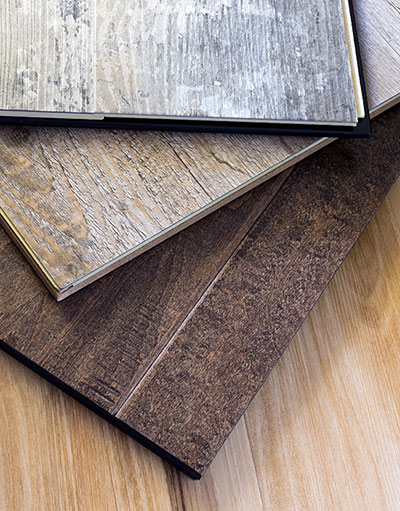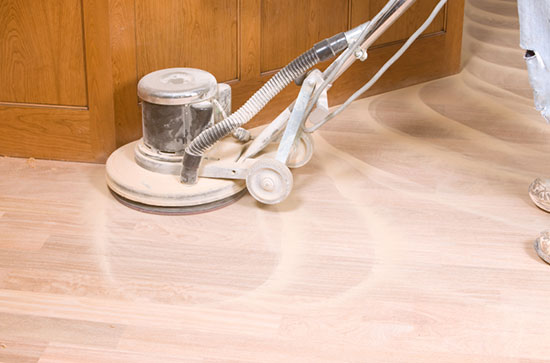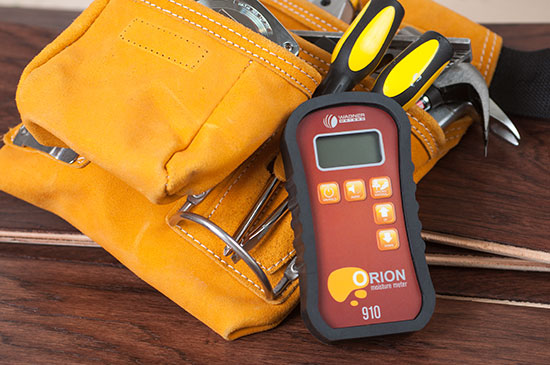Is Engineered Hardwood as Good as a Natural Hardwood Floor?

Engineered wood is made of a thin layer of hardwood that’s bonded to a substrate of high-quality plywood.
You’ve no doubt heard that engineered wood flooring is rapidly growing in popularity. But what exactly is engineered wood? Is it that much different than natural hardwood flooring? And is one option decidedly better than the other?
Similar look, very different manufacturing process
Engineered wood looks strikingly similar to solid hardwood flooring. At least that’s what you’ll find when you examine the surface of a floor made of engineered wood. But consider this similarity in appearance to be only skin deep. That’s because engineered hardwood consists of a thin layer of hardwood that is bonded to a substrate of high-quality plywood.
Solid hardwood planks, of course, are just that—solid boards of 100 percent hardwood. They are milled with tongues and grooves on opposite sides, such that the wood planks interlock when installed.
Because of the way it is manufactured, it takes less hardwood to make engineered wood flooring. This keeps the initial cost lower (usually) when compared to the cost of solid hardwood. In the long-term, however, the initial savings may disappear when you consider the eventual need to sand and refinish a wood floor to make it look like new again.
What about sanding and refinishing?
Most engineered wood flooring can be sanded and refinished only once, maybe twice for premium wood. The hardwood layer is simply not thick enough to accommodate repeated sanding.
Bottom line: the expected lifespan of an engineered wood floor may be limited to about 25-30 years.

In contrast to solid hardwood, most engineered wood flooring can be sanded and refinished only once, maybe twice for premium wood.
That’s not so for a solid hardwood floor. It can be sanded and refinished multiple times. This means that with proper care, a natural hardwood floor can be thought of as a true investment that can be expected to last a lifetime.
The cost factor: not all engineered wood is created equal
First and foremost, engineered wood is generally considered cost-efficient compared to solid hardwood, especially when the project’s budget dictates that one focus primarily on up-front costs. Even so, not all engineered wood is created equal. Some premium engineered woods are quite comparable in price to solid hardwood.
The high cost for premium engineered wood may make sense for buyers looking for greater durability and the option to sand and refinish more than once. The best-engineered woods are constructed with up to 12 cross layers of plywood glued and pressed together, a construction process that can make it highly durable and less prone to warping. Generally, premium engineered wood also includes a thicker top layer of hardwood that allows for more sanding and refinishing.
The benefit of being environmentally friendly
Most people would say engineered wood flooring is more environmentally friendly than solid hardwood. For one, significantly less hardwood is required to create each board. Typically, for every square foot of solid hardwood flooring manufactured, you can manufacture about four times that amount into engineered wood flooring. This translates to less impact on slow-growing hardwood forests. Additionally, the production process for making engineered wood is quite efficient with little waste of the hardwood material.
Bottom line: if you’re looking to help conserve forests, engineered wood flooring makes a great choice.
Moisture management of engineered wood flooring

To prevent moisture problems in engineered wood flooring, the installer should always use a non-damaging pinless wood moisture meter.
Keep in mind that just like any wood flooring (including solid hardwood), an engineered wood product is just what its name suggests—a wood product. And that means paying attention to the moisture content of the wood before, during, and after installation. All wood is hygroscopic, meaning it absorbs or releases moisture in response to ambient conditions. As it does this, the wood expands or shrinks. When too large or too fast of a change in the moisture level of the wood occurs, you are at risk of moisture-related damage to the wood floor and—potentially—a costly repair bill.
To prevent expensive moisture problems, it’s important to use a high-quality, non-damaging pinless wood moisture meter at the time of installation. By using a pinless moisture meter, you can monitor moisture content levels and determine the right time to install. No guesswork involved!
And here’s the key thing to know about moisture content when preparing to install: Always wait until the wood is at or near the equilibrium moisture content or EMC—that is, the point at which the wood’s moisture level matches the ambient conditions.
Engineered wood or solid hardwood: the choice is yours
Yes, engineered wood looks like solid wood flooring. But the construction is very different. This may affect the choice you make, whether you’re looking to conserve forest resources or you like the idea of a wood floor that can last a lifetime.
Whichever choice you make for your next flooring project, remember, moisture is always the enemy of flooring. Fortunately, it’s extremely easy to address and manage this by adding a wood moisture meter to your toolbox.

Jason Wright, Business Development Specialist for New Products, joined Wagner Meters in 2019. He comes to Wagner with over 35 years of experience in the flooring industry.
Last updated on June 15th, 2023




All you said are true and make sense. Thank you for discussing this.
good read
Great article; it was very informative.
Great explanation of the difference between the two.